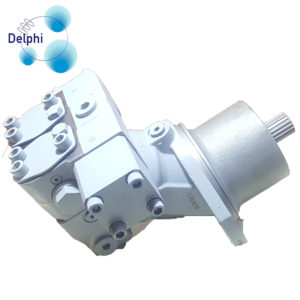When designing a 3-pump hydraulic system, there are several factors to consider to ensure that the system is efficient, safe, and effective.
Here are some key factors to keep in mind:
System requirements: Consider the specific requirements of the hydraulic system, such as the flow rate, pressure, and power needed to operate each function. This will help determine the size and type of pumps needed for the system.
Pump selection: Choose pumps that are appropriate for the specific application. Consider factors such as the type of fluid being used, the required flow rate and pressure, and the duty cycle of the system. It’s also important to select pumps that are compatible with the rest of the hydraulic system components.
Hydraulic fluid: Choose the appropriate hydraulic fluid for the system. Consider factors such as the operating temperature range, viscosity, and compatibility with the system’s components.
Safety: Ensure that the hydraulic system is designed with safety in mind. Consider factors such as pressure relief valves, safety interlocks, and emergency stop switches to ensure safe operation of the system.
Control system: Choose the appropriate control system for the hydraulic system. Consider factors such as the required precision and accuracy of the system, and the preferred method of control (e.g. manual, automated, or remote).
Maintenance: Consider the maintenance requirements of the hydraulic system. Choose components that are easy to access and service, and ensure that the system is designed with maintenance in mind.
By considering these factors when designing a 3-pump hydraulic system, you can ensure that the system is efficient, safe, and effective for the specific application. It’s important to work with a qualified hydraulic system designer or engineer to ensure that the system is designed and installed correctly.
How can I ensure that the hydraulic system is designed safely?
Designing a hydraulic system safely requires careful consideration of the potential hazards and risks associated with hydraulic systems, as well as compliance with relevant safety standards and regulations.
Here are some key steps to ensure that a hydraulic system is designed safely:
Identify hazards: Identify potential hazards associated with the hydraulic system, such as high pressure, fluid leaks, and mechanical failures. Conduct a risk assessment to evaluate the likelihood and severity of these hazards, and identify measures to mitigate or eliminate them.
Choose appropriate components: Choose hydraulic components that are appropriate for the specific application and are designed to meet relevant safety standards and regulations, 3 pump hydraulic setup such as ISO 4413 and EN 982. Ensure that all components are compatible with each other and the hydraulic fluid being used.
Install components correctly: Install hydraulic components correctly, following the manufacturer’s instructions and any relevant safety regulations. Ensure that all connections are tight and secure, and that hoses and pipes are properly routed and supported.
Use pressure relief valves: Pressure relief valves should be installed to prevent the hydraulic system from exceeding its maximum pressure rating. Ensure that relief valves are set to the appropriate pressure and are properly sized for the system.
Add safety features: Consider adding safety features to the hydraulic system, such as interlocks, emergency stop switches, and warning labels. These features can help prevent accidents and injuries by alerting users to potential hazards and stopping the system in the event of an emergency.
Conduct testing and inspection: Conduct testing and inspection of the hydraulic system before and after installation to ensure that it is operating safely and efficiently. Regular maintenance and inspections should also be conducted to ensure that the system remains in safe operating condition.
By following these steps and working with a qualified hydraulic system designer or engineer, you can ensure that your hydraulic system is designed and installed safely for the specific application.
